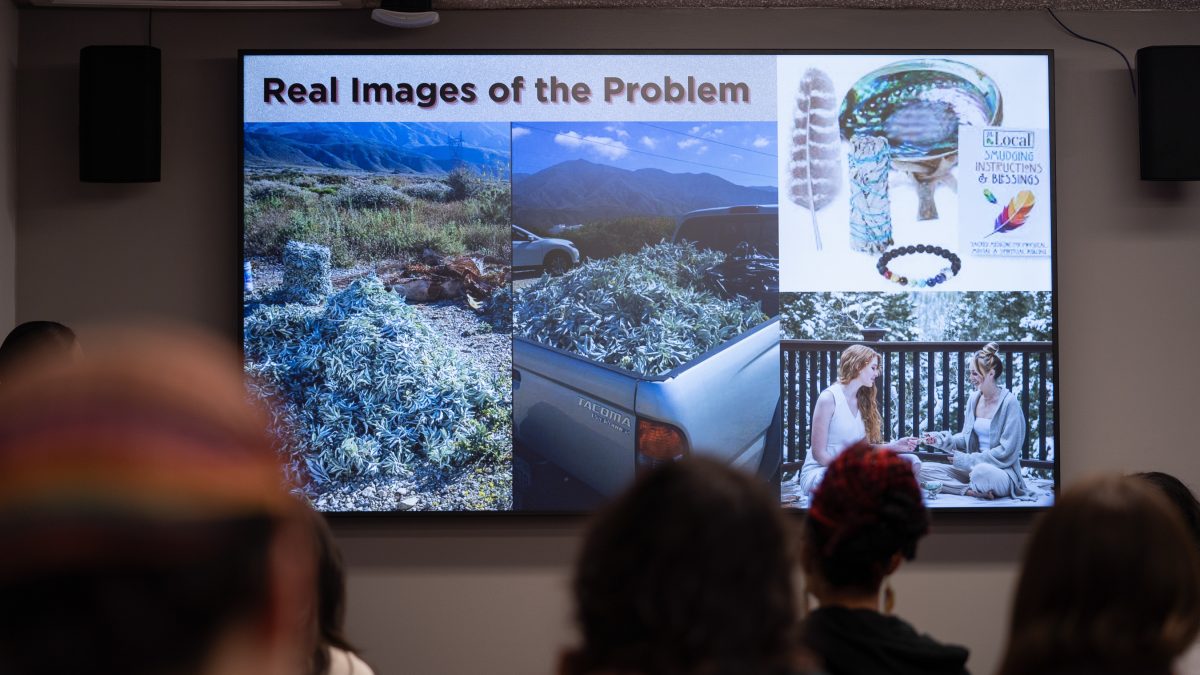Last Monday, the American Indian Student Association and California Native Vote Project hosted a presentation on the importance of white sage protection. The event took place in the Lake Balboa Room at the Northridge Center Complex, University Student Union.
Often referred to as “grandmother,” white sage is a plant commonly used among Native American communities for medicine, food and ceremonies, according to California Native Plant Society.
Today, white sage faces threats of endangerment due to overharvesting, climate change, commercialization and lack of knowledge. For AISA and CNVP, it is essential to spread awareness on this growing issue.
“For Native communities, white sage represents an incredibly sacred relative to us,” explained Liam Walsh, a Rincon Band of Luiseño Mission Indian and youth organizer of CNVP. “White sage is overused around the world on a daily basis by people who have no knowledge of where it comes from, and who the rightful stewards of this plant are.”
The CNVP aims to achieve self-determination and justice for Native American communities through organization and civic engagement. Since its launch in 2016, CNVP has facilitated the Indigenous Education Now Coalition, which advocates for improvements of Native American and Indigenous education in Los Angeles County. Along with other efforts, the organization has also conducted census outreach and voter registration among Native American communities within the state.
Despite its global utilization, white sage is an endemic plant, meaning the evergreen aromatic shrub is only native to Southern and Baja California. According to Walsh, the scarcity of white sage is also of growing concern among Native communities.
“What I think needs to be understood is that the protocols we have as tribal people for how we procure this medicine is very specific,” said Walsh. “It’s something that gets passed down generation to generation. How to harvest this plant, when to harvest it, for how you’re using it throughout the year, because at different times of the year, it’s going to possess different properties.”
For AISA president Alexandria Ybarra, white sage protection is necessary. Without a plan of action, the plant may face extinction in the future.
“We won’t be able to have white sage for our tradition, for our ceremony, for medicine, for food,” said Ybarra. “It’ll kind of just be another thing that has been taken away from us.”
According to CNPS, ways to act regarding white sage protection include understanding sources, boycotting illegally harvested sage products, growing white sage and connecting with native plants.
In upcoming weeks, AISA plans to host a hands-on demonstration that will teach students how to plant white sage. The event will take place at the garden behind La Casita, where the association’s weekly meetings are held. No set date has been confirmed yet.
“[Students] should expect to come with the understanding that what you’re learning is somebody’s traditional practices,” said Ybarra. “You should expect to learn a lot and to get your hands a little bit dirty too.”






